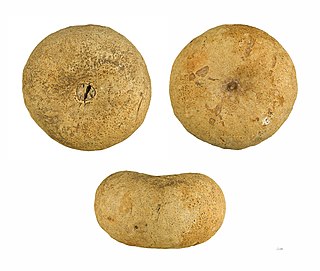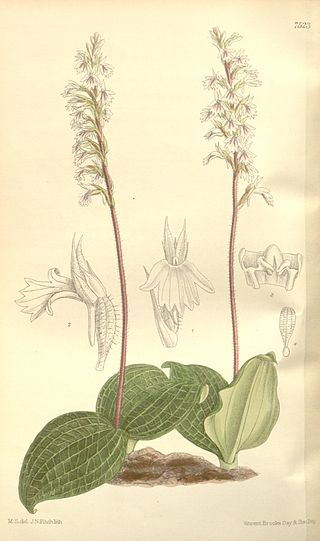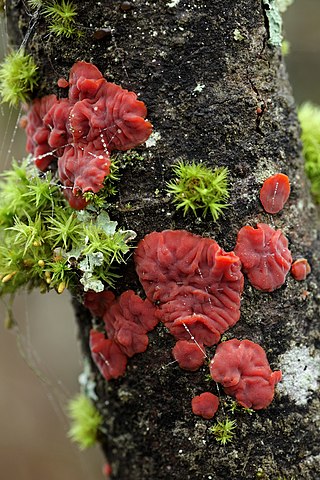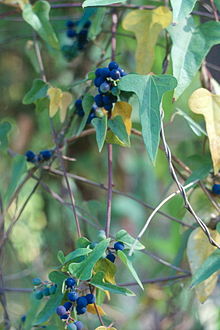
Octomeria is a plant genus belonging to the family Orchidaceae. The genus comprises about 150 species native to the Neotropics, mostly in Brazil.

Crassocephalum is a genus the common names of whose members include ragleaf, thickhead, and bologi. Several species are raised as leaf vegetables and used for medicine, especially in West Africa. Similar to Senecio, but differing in never having ray florets. A calyculus of short bracts is present. The genus is typically thistle-like in appearance, but all parts are soft and not spiny.
Benthamia is a genus of orchids. It contains 29 recognized species, all native to Madagascar, Mauritius and Réunion.
Sir Clive Forster-Cooper, FRS was an English palaeontologist and director of the Cambridge University Museum of Zoology and Natural History Museum in London. He was the first to describe Paraceratherium, also commonly known as Indricotherium or Baluchitherium, the largest known land mammal.

Puccinia recondita is a fungus species and plant pathogen belonging to the order of Pucciniales and family Pucciniaceae.

Omphalocarpum is a genus of plants belonging to the family Sapotaceae. It was first described in 1800 by Palisot de Beauvois. The genus is endemic to tropical Africa.

Holothrix is a genus of plants in family Orchidaceae. It contains the following species :

Rhaphidophora is a genus in the family Araceae, occurring from tropical Africa eastwards through Malesia and Australasia to the Western Pacific. The genus consists of approximately 100 species.

Ceratostylis is a genus of orchids with more than 140 species distributed in China, India, Southeast Asia, New Guinea, the Philippines, and Melanesia.

Campylocentrum is a genus of rare orchids native to Mexico, the West Indies, Central America and South America. One species (C. pachyrrhizum) extends its range into Florida.

Cytidia salicina commonly known as Scarlet Splash is a species of Fungus that is found growing on willows and other deciduous woody plants in Europe. The spores are 12-18x4-5 um.

Chorispora is a genus of plant in the family Brassicaceae.
Cyclea elegans is a species of flowering plants in the family Menispermaceae. It is found in Sumatra, Malaya, Borneo. An isotype is kept at Kew Gardens Herbarium. It was collected on Mount Kinabalu Dallas.

Tetramicra canaliculata is a species of orchids in the subtribe Laeliinae. It is found in Florida, Hispaniola, Puerto Rico, Trinidad and the Lesser Antilles. It is the type species of its genus.

Fridericia is a genus of plants in the family Bignoniaceae.
Benedetto Scortechini (1845–1886) was an Italian botanist, explorer, and Roman Catholic priest.

Lentinus levis is a species of edible fungus in the family Polyporaceae. It was described by Miles Joseph Berkeley and Moses Ashley Curtis in 1853 and given its current name in 1915 by William Murrill. As a saprotroph, it can be cultivated. In nature it grows in subtropical to tropical climate. It is recognized and sometimes collected as a food by Huichol people of Mexico, although they prefer eating other, less chewy mushrooms. For a long time thought to be a member of Pleurotus genus, it has been moved to genus Lentinus.













